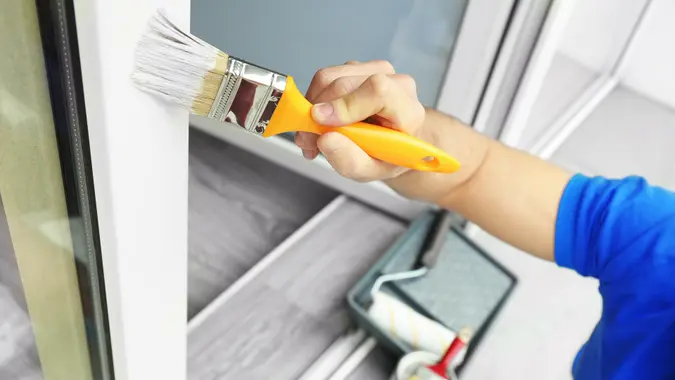The Ideal Temperature To Set Your Thermostat at This Winter and Other Ways To Reduce Energy Costs Year-Round

Commitment to Our Readers
GOBankingRates' editorial team is committed to bringing you unbiased reviews and information. We use data-driven methodologies to evaluate financial products and services - our reviews and ratings are not influenced by advertisers. You can read more about our editorial guidelines and our products and services review methodology.

20 Years
Helping You Live Richer

Reviewed
by Experts

Trusted by
Millions of Readers
Keeping warm doesn’t have to cost you an arm and a leg. Adjusting the thermostat is one way to lower energy costs, but there are other ways to save year-round.
The U.S. Department of Energy (DOE) recommends keeping your thermostat at 68 degrees Fahrenheit for most of the day during the winter. When you’re away or asleep, turn the temperature down seven to ten degrees to reduce your yearly energy costs by up to 10%.
This may not be comfortable for some people, but when you lower your home’s temperature, it loses heat more slowly than if the temperature were higher, according to the DOE. The longer your house remains at a lower temperature, the more money you save on energy.
You can adjust your home’s indoor temperature manually, or you can use a programmable thermostat to avoid any discomfort and have it automatically adjust the temperature when you wake up or come home from work.
Another way to keep your energy bills in check is to cover and repair your windows. Windows are a big source of energy loss during the summer and winter, especially if they aren’t insulated. Caulking small gaps, applying weatherstripping to moveable parts and installing drapes or shades can help keep your home comfortable.
Check your HVAC system’s filters. Filters trap dust, pollen, lint, hair and other particles — and over time, they can reduce airflow and cause your systems to work harder. The DOE recommends checking your filter every month and at a minimum, replacing the filter at least once every three months.
If your home has ceiling fans, you can use them to keep you comfortable. To do this during the winter, reverse the motor in the ceiling fan so that it rotates clockwise at a low speed. This creates an updraft, forcing warm air near the ceiling into the occupied space. When you leave the room, don’t forget to turn off the fan to keep costs low.
More From GOBankingRates
 Written by
Written by  Edited by
Edited by 

























